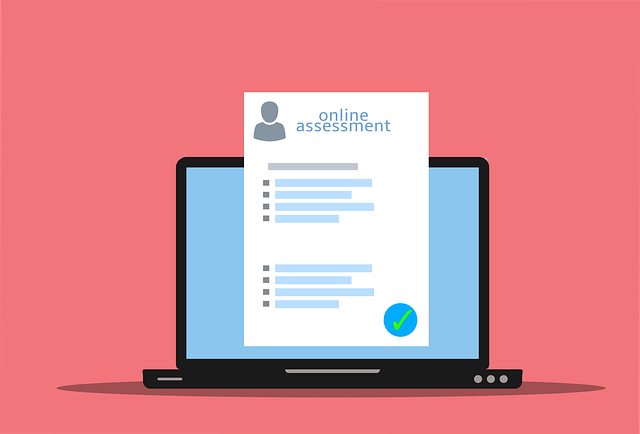SquareSpace Website Builder Review
With varying levels of creator expertise, website builders must be easy to use, while also providing enough customization to create a truly unique website. We’re going to see if Squarespace meets the challenge of creating a customizable website without breaking the bank — or your sanity.
Overview of Squarespace
Like many top-tier website builders today, Squarespace has a drag-and-drop design. With its many well-designed templates and flexible spaces, it can work as a blog, an ecommerce site, and even a showcase for artists or restaurants. Squarespace has four different plans, all of which come at different prices:
- Personal, at $12 a month
- Business, at $18 a month
- Basic Ecommerce, at $26 a month
- Advanced Ecommerce, at $40 a month
Squarespace just came off the heels of a vast overhaul, which improved many things about the platform. Unfortunately, previous Squarespace site owners who want to take advantage will have to completely rebuild their sites with all the new features. There is an on-site guide for this process, but it might be a considerable project, nonetheless.
How Easy is Squarespace to Use?
Things called “sections” and “content blocks” make up each Squarespace website. Sections stack horizontally on a page for a neat, organized layout. The content blocks are, well, the content of the page, with text, images, buttons, and more. Both of these are customizable, and you can add as many content blocks as you like.
Easier Features for Restaurant Websites
The Menu content block makes it easy for restaurant websites to post their menu in fun ways. Previously, you might have needed to upload your menu as a PDF because of its customization in a website builder. This way, the menu can be right on the website for customers to click on in one go.
Simpler Interface
Thanks to Squarespace’s updates, the interface is much more open and visible. Previous versions didn’t make important buttons, like mobile buttons and design icons, evident in both desktop and mobile. Sometimes, users would have to scan the page with their mouse trying to find buttons, but that’s not the case anymore.
The layout is also not as minimal. In this case, buttons are not as small, and unrecognizable icons do not hide vital features. Squarespace’s design does not accommodate those wanting to make a complicated website or tinker with coding a lot. If you’re going to pick a template, add some text and images, and call it a day, this particular platform might be ideal.
Slightly Confusing Features
Every website has a set of features, buttons, and menus that are obvious to most users. However, some of Squarespace’s menus and functions do not always do what users might immediately expect. For instance, if you wanted to change something about your site’s layout, you might not know whether to go to the editor or the design menu.
There’s also a feature called “Image Blocks,” but not every user knows right away what that means. Is it an image library? Is it a bunch of images in the shape of blocks? It’s hard to guess, and it doesn’t even sound entirely useful. On the whole, the editing software takes some getting used to.
Verdict
On the whole, Squarespace is one of the easiest website builders to use. It’s not the most intuitive of website platforms, but it does allow you to play around. For users who have never done web design, it might be the optimal choice.
How is Squarespace’s Design?
World-class designers design the templates for Squarespace. Specially curated color palettes can fit almost any template you choose. The best part is that every template works well for both desktop and mobile viewing, both with easy navigation.
Template Quality
Many Squarespace templates leave a lot of room for photos and large, bold fonts. These templates work best when using high-quality images. For this reason, Squarespace tends to be popular with artists, photographers, and online stores.
All templates also have access to the same features and design options. The only downside is that once you pick a template, you’re stuck with it. Luckily, the editor feature can help you customize the site. You can choose different colors, styles, headers, and other such things. The Design menu is another option for customizing your website, where you can play with text, font, and colors.
Picture/Photo Choices
To get the best quality pictures, you can look for stock photos on Unsplash or buy the licenses to other professional pictures on Getty Images for $10 each. Be mindful that, with pictures, Squarespace does not have a place to store the images you upload. If you’re going to upload a photo a second time, you’ll have to upload it manually.
All pictures can be resized, cropped, and rotated to your liking. One cool feature is the “focal point,” which will always keep one specific aspect of a photo in focus and displayed, no matter what kind of device you view it on.
On a different note, you can also drop data into your Squarespace site to create various charts: pie, graph, line, etc. However, you cannot use that data to create tables — probably because charts are much more visually appealing, and tables require more coding.
In-Site Logo Design
All Squarespace sites come with a logo design app. You can choose from several symbols and typefaces, which you will drop onto a grid and arrange however you wish. Once you have a final design, you can download a high-resolution version to use and upload however you like.
Do keep in mind that the typefaces and fonts for the logo design are not all the same as the site itself. Make sure you pick a typeface that is consistent with your website. You cannot upload any images into the design grid; you’ll have to choose from among the symbols or pictures already provided.
New Background Capabilities
The website layout has changed from the previous version of Squarespace. Before, you could only have a background image at the top of the page, but now, the background can be behind the whole page.
The fun part is that you can now add a moving video background. You can upload a looped video from either YouTube or Vimeo, while also adding filters for an extra touch. Speeding the video up or slowing it down creates an extra punch for your site’s design.
Fonts and Colors
The new Squarespace also has improved fonts and colors. Previous versions would have made a lot more work out of customizing individual parts of a web page. Now, you just have to choose a base font color and font size, and you can go from there.
While you cannot switch between templates, you at least have the freedom to choose between color palettes. These can also be customized a little further. Over 1,000 fonts from Adobe and over 600 from Google are also available — a slightly higher number than competing website builders.
Verdict
While Squarespace’s templates seem best built for users with lots of pictures and space to fill, it also leaves a lot of room for creative design.
How Good is Squarespace’s Tech Support?
Squarespace covers nearly every area of tech support, with live chat and 24/7 email support. The only thing they’re missing is a customer service telephone number. They also have set hours for their live chat, from 4 a.m. to 8 p.m. EST from Monday to Friday. Live chat is super fast, but emails might take a little time, depending on current demand.
Similarly, you can fill in a contact form for help. The form will provide you a list of issues to choose from so that you can get pointed toward the right support.
Sometimes, Squarespace’s tech support will host demonstrations for customers, and they’ll take screenshots of their demonstration for the customer to keep.
Limited Support
However, what help you might receive depends on how much CSS code you have added to your site. In which case, Squarespace’s team reserves the right to limit the help they give you. They also seem to work best with smaller issues, as sometimes, they may redirect you to the Squarespace blog to read up on your question first.
In some cases, you might have multiple team members helping with the same issue. While this may sound like more of a good thing, it doesn’t always mean that every team member will be following the thread of the problem.
Customer support also seems to rely on the user going through several dropdown menus looking for the right topic before sending an email.
Hiring a Web Developer
If you need help developing your site as a whole, it would be good to research Squarespace’s thousands of web developers. Each has a profile with their location and industry experience to match your needs with their expertise. Before contacting a developer, make sure you know the following:
- Your website’s goals
- What special features you want
- Pictures
- Written copy
Once you know the specifics for your site, fill out a form with this info and send it to the developer.
Verdict
Squarespace could use more work with their tech support. While tech support is available and can be quality, it is not as fast or efficient as it could be.
Squarespace’s Different Templates
As mentioned, Squarespace has four different plans you can pick. While there is no free plan among them, Squarespace gives you a 14-day free trial to see if it is the right platform for you. Squarespace is among the more expensive website builders, so taking advantage of this perk is highly recommended.
Personal
The Personal plan is as basic as you can go for a Squarespace site. There isn’t much to it aside from the blog feature and the primary text/image additions. You also cannot sell anything on that plan, and it does not allow you to style your site using CSS coding.
You cannot add script to the Personal plan, which means you cannot add code to integrate other apps and services to your site. Not adding script might not be a bad thing if you’re going for something simple, but for business or ecommerce sites, being able to add third-party integrations are necessary.
Business
The Business plan name says it all: it’s the plan you pick when you want to promote or showcase your business. You can make some transactions in this one, but it is not a full-blown ecommerce site. On the whole, this plan is where even the most basic of Squarespace’s most impressive and excellent features begin.
If the Personal plan does not allow you to add script, then the Business plan gives you access to a full range of integrations and third-party apps, like Dropbox, Pinterest, a Google Drive, etc.
However, if you make sales on this plan, do be aware that Squarespace will take 3% of all transactions. Although, with this plan, you will get a free G-suite account for a year, giving you access to Google Mail, Google Docs, Suites, etc. You can also activate promotional pop-ups in this plan, asking visitors to sign up for a mailing list, or even emphasize special offers.
Basic Ecommerce
Squarespace’s ecommerce plans are pretty equal with other ecommerce sites, like Shopify or Bigcommerce, in terms of price (Shopify’s basic plan is $29). Neither the Basic or Advanced Ecommerce plans ask for transaction fees. Same as the Business plan, you will also get access to a free G-suite account.
The ecommerce plan also accepts most major credit cards and has a variety of payment gateways. However, payment gateways like PayPal or Stripe may have their transaction fees.
Advanced ECommerce
The most expensive and expansive plan of them all, Advanced Ecommerce combines everything excellent about the other plant. It even comes with an abandoned cart recovery feature, which automatically identifies and emails customers who have items in a cart but have not checked out
Verdict
Each of Squarespace’s plans serves different purposes, but you’ll definitely get more benefits with the Business plans and up since the Personal plan does not allow you to add script.
Squarespace’s Tools and Features
We’ve already talked a little about how easy Squarespace is, but that’s no good if Squarespace cannot help you in reaching an audience, or in making a pretty-looking website.
Email Marketing Campaigns
One marketing tool to help you promote your site is Squarespace Email Campaigns, which, depending on the plan you buy, will send a certain number of emails per month. Email campaigns can be anywhere from $5-$48 a month.
With an in-site email campaigning tool, you can manage your website and your mailing list all in one place. Email lists can sometimes be the difference between having clients and leads versus very few. It is also a cheaper alternative to Mailchimp.
Although Squarespace Email Campaigning has an autoresponder feature, it is a basic function compared to what dedicated email campaigning sites, like Mailchimp, can offer. Depending on the size and function of your business, you might want to consider a more specialized service for this purpose. Once again, Squarespace’s email campaigning feature might serve a basic site at best.
Marketing
While email campaigns are okay for staying in touch with customers, you can customize other means of reaching them. For example, you can customize your email receipts to say some of the following things:
- Thank the customer for shopping at your store
- Invite the customer back to the shop again
- Simply wish them a good day.
In terms of ecommerce sites, Squarespace has consistently ranked among the best, though it has never beaten Shopify for the winning title (probably because Squarespace is easier to figure out). Many people use Squarespace for ecommerce because it supports so many plugins and extensions for ecommerce, while also supporting other website-building features.
SEO (Search Engine Optimization)
Squarespace has an analytic app, simply called Analytics, although many users prefer Google Analytics. You can see when, where, and how often people have visited your site. In truth, Squarespace is on equal terms with many other website builders in SEO, so there aren’t many differences.
The Squarespace Metrics App is also available for analytics, but it’s not as detailed as Google Analytics.
When most people think of SEO, they think of optimizing keywords in their written content. While that is true, you must also consider your meta titles and descriptions, which appear in search engine results. Many plugins can help you with this part.
One SEO tool to consider is rich snippets, which tell search engines what your site is all about. To get them, you could add Schema markup. When Google finds your site, they will not just find summaries, but also star ratings, price ranges for different items, the number of reviews, etc.
Payments
Tax compliance can cause some anxiety for online shop owners, but Squarespace has its own built-in tax tools to make tax compliance more manageable.
In terms of how customers make payments, many sources recommend Stripe because of its Apple Pay integration. Apply Pay has had consistent success over the years with secure payments, especially on mobile devices. Considering that more and more online purchases are happening on mobile devices, this is a great perk.
On the other hand, Squarespace does not have one good way to make a site multilingual. A multilingual website makes it easier for merchants and customers who don’t speak English or use US/EU currency to use your site. You might be able to create one using WordPress Multilingual or WordPress Multisite, or even the third-party tool Weglot.
Plugins/Integrations
Most website builders consider plugins and integrations the heart and soul of any website. They are undoubtedly essential, but there is sometimes an overwhelming amount to look through. Squarespace has plenty of plugins and extensions, but they seem concerned with promoting the best.
The good news is that the best plugins blend seamlessly with any Squarespace page, all of which are in the Squarespace Extensions Store. Many of these extensions are made for ecommerce and business sites and can help you with accounting, appointment scheduling, social media, and more.
Blogging
Squarespace seems to be the biggest competitor with WordPress for the premier blogging service. You can set a publication date and time for each post, and it even has multi-author functionality. Speaking of WordPress, Squarespace allows you to import content from WordPress and other blogging sites, like Tumblr.
However, because there is no autosaving in Squarespace, there is also no archived older versions of your posts. If you’re creating a post and the site crashes in the middle of it, there is no way to recover lost content.
Importing and Exporting Content
While it is easy to import content, as mentioned previously, exporting content is a different story. If you’re on an Ecommerce plan, you can import information from Shopify or Etsy. There is a 2000 item limit on how much you can export from your site, including variants of the same product. Digital services or products also cannot be exported.
Once again, if you’re trying to grow a larger business, or your inventory might exceed 2000 variants, Squarespace might not be the best choice.
Mobile Versatility
Users can view Squarespace on any mobile device, and you can take care of your business on the go. You can handle inventory and manage product images, and there is even a built-in scanner to keep track of shopping labels.
Squarespace has three different apps for on-the-go management:
- Commerce, which comes in useful for online stores
- Analytics, which does, well, analytics, helping you keep up with visitor traffic to your site.
- The Squarespace app, which works best for adding text and images and managing a blog.
Quick Mobile Loading
Squarespace also comes with AMP support, or Accelerated Mobile Pages, which helps create mobile versions of Squarespace pages that load quickly. Google tends to prioritize sites with AMP support, but it can only support blog content, and not necessarily website content. Still, all Squarespace plans come with blogs so that any Squarespace site will have AMP.
Podcast Integration
Something not a lot of people consider with websites is podcasts. Squarespace is one of few website builders that allows the syndication of podcasts. A syndicated podcast can reach a wider audience and get uploaded onto Spotify and Apple Podcasts (uploading onto those two platforms requires syndication). Podcasts are also easy to publish on a Squarespace page —the same way you can embed YouTube videos or Spotify playlists.
Security
Squarespace hosts each website created through it, so it monitors your site for you. SSL (Secure Sockets Layer) certificates are provided free for each domain. WHOIS privacy is also included for each domain, meaning that the information of whoever registers the domain will be anonymized.
However, the site also prompts you to save changes to your website quite a bit. While this may be annoying to some, it is a helpful precaution against losing a lot of design effort.
Similarly, Squarespace does not do regular backups or software updates. In fact, there are no backups at all. Specific extensions or plugins might help, but if you’re at all anxious about losing your records, you might be better off creating a smaller site with less information.
Verdict
You’ll have to stay on top of your Squarespace page’s security, despite having a free SSL certificate. The fact that there is so much manual saving and no automatic backups might involve extra work you don’t want to do.
Squarespace Pricing and Value for Money
The first question people usually ask about creating a site is how much it costs. Luckily, all Squarespace sites on an annual plan include one custom domain free of charge. Any domains you add after that can be anywhere from $20-$70.
However, Squarespace is a little on the expensive side compared to other website builders. But domain registration sites like GoDaddy or Namecheap can provide you a cheaper domain for roughly $15. The great news is that you can easily integrate this domain into Squarespace.
Verdict
Luckily, Squarespace is transparent with their payment plans, whether for general websites or ecommerce. They are still a touch more expensive than other sites, but it’s worth what you get for each plan or domain.
Pros and Cons of Squarespace
Pros:
- Beautiful clean templates
- Not a steep learning curve
- Terrific customization capabilities
Cons:
- Doesn’t provide any backups to your site
- Not the most “intuitive” website builder to use
- Cannot hold a lot of content
Final Thoughts
There is much to celebrate about the newest version of Squarespace, but also much to critique. On the one hand, it is an excellent platform for websites that also act as portfolios or brochures: pictures and some text here and there. Small businesses with simple information that doesn’t require much navigation would also work in this platform.
If you’re going to create a site that requires multilingual function, lots of information exportation, and plenty of ecommerce, you might be better off with another platform.













